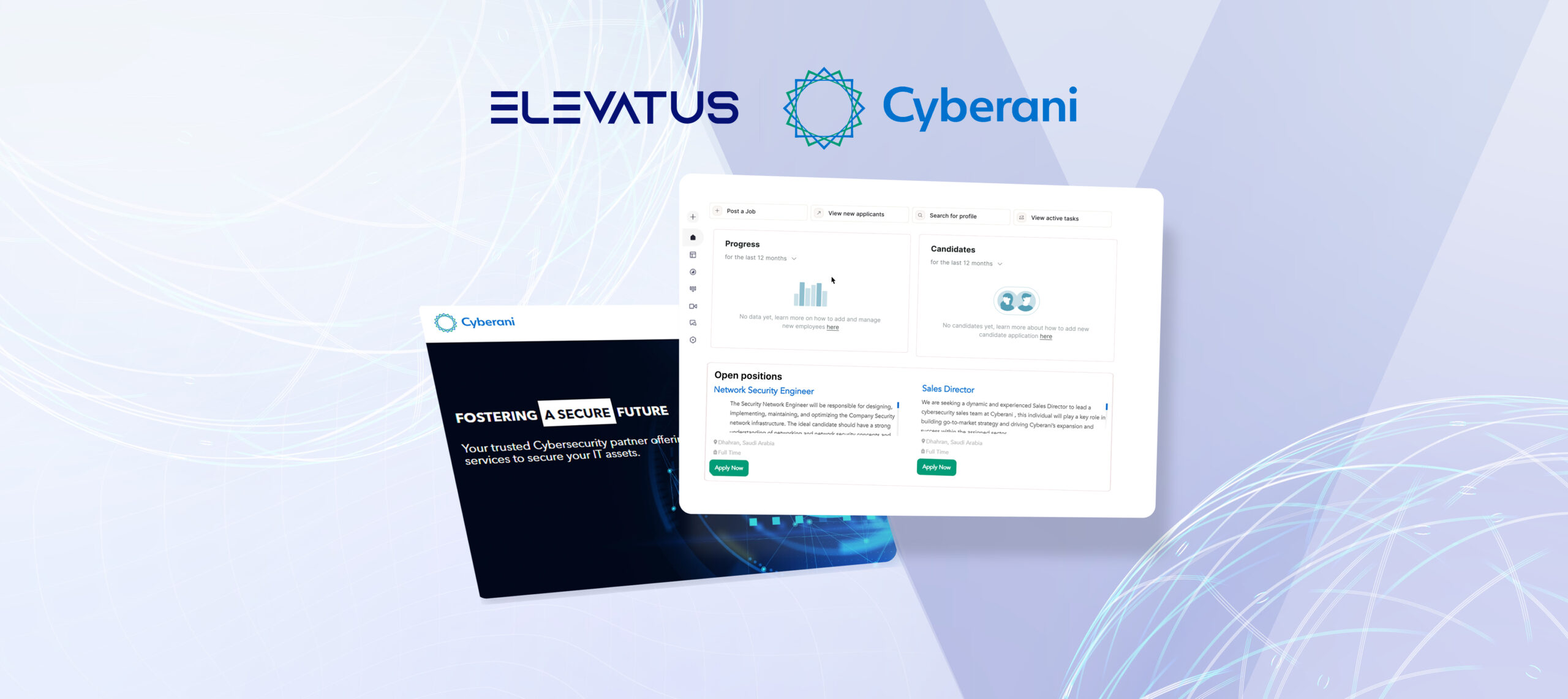
7 Powerful Workplace Trends Leaders Should Watch in 2024
February 15, 2024
Reem Al-Tamimi
Content Writer
It’s that time of the year again when you navigate the latest workplace trends to ensure your organization stays ahead of the curve.
As 2024 starts to unfold, the spotlight is on embracing technology, prioritizing sustainability, and enhancing employee well-being.
Organizations are rapidly moving towards remote, hybrid, and flexible work models, fostering cultures of innovation, diversity, and inclusivity. The challenge? Keeping a spread workforce connected and engaged reinforces a strong organizational culture in a changing work environment.
As we pivot towards these evolving workplace trends, our focus is on building adaptable, resilient organizations. Stay ahead in this dynamic landscape by joining us in exploring the 7 key workplace trends of 2024, equipping you to lead your team to thrive in this innovative era.
Get advanced analytics and recruiting reports
Collaborate with your colleagues and enhance your hiring process by leveraging real-time recruiting analytics, reports, and insights – that track progress and easily identify areas for improvement.
Request a demoReset and Recharge: Navigating the New Dynamics of Work in 2024


The workplace is undergoing a shift, transforming the way we think about workforce management and organizational culture. Recent global events have turbocharged these changes, pushing us towards a pivotal relationship reset between employers and employees in 2024. As we navigate through these dynamic changes, understanding the current workplace trends and global workplace trends becomes crucial for leaders aiming to steer their organizations successfully through these evolving times.
Back in 2019, the majority of remote-capable employees were tethered to the office. Fast forward to today, and we see a dramatic shift with a significant reduction in on-site work, illustrating just how quickly the landscape has evolved. But the transformation goes deeper than just the physical location of work. It’s about the essence of our work relationships – with colleagues, managers, and the broader organization – undergoing fundamental changes. Organizations are now rethinking their strategies, from job responsibilities to team structures, in response to these shifts.
To thrive in 2024, it’s essential for leaders to adapt their management approaches to align with these shifts, ensuring they support the changing needs of their workforce and foster a culture that promotes engagement and well-being. Let’s dive into this journey together, exploring how to harness these trends for a more resilient and vibrant workplace.
7 Workplace Trends Leaders Should Watch in 2024 and Beyond


Dive into the future of work with us as we explore the new workplace trends set to redefine how we operate. In 2024 and beyond, leaders must adapt to stay ahead, ensuring their organizations are not just surviving but thriving in this ever-evolving landscape.
Trend 1: Hybrid Work Models Becoming Standard
As the lines between home and office blur, hybrid work models are becoming the norm, marking a significant shift in workplace trends. With 87% of people expecting companies to introduce more return-to-office policies, the hybrid model emerges as a balanced solution. It combines the best of both worlds: the synergistic collaboration that comes from in-office interactions and the flexibility of remote work. This dual approach necessitates a thoughtful redesign of workspaces and a reassessment of work policies to accommodate both settings effectively.
But what does this mean for leaders and organizations? It’s time for a rethink on how workspaces are designed and how policies are set. The challenge lies in creating an environment that supports in-person and remote work without missing a beat. This requires not just the right technology to bridge the gap between different working locations but also a cultural shift. The goal is to ensure that regardless of where employees are working, they feel part of a cohesive, engaged team.
Here’s a concise timeline illustrating the evolution of hybrid work:
In the 1970s, early telecommuting experiments aimed to reduce office space and commuting times.
The rise of the internet in the 1990s made remote work more practical and widespread.
The 2000s saw a growing demand for work-life balance, prompting more flexible working arrangements.
Co-working spaces and advanced collaboration tools in the 2010s further facilitated flexible work.
The COVID-19 pandemic in 2020 forced a global, rapid shift to remote work practices.
Post-pandemic, organizations are blending remote and in-office work to create efficient hybrid models.
Trend 2: Increased Focus on Employee Well-being
Employee well-being is soaring to the top of the agenda in workplace trends as organizations acknowledge its crucial role in enhancing productivity and retention. With 62% of workers bracing for a more stressful labor market in 2024 and another 40% foreseeing a rise in job burnout, the call for a comprehensive approach to employee well-being is louder than ever.
This encompasses not just mental but also physical and financial health initiatives. In response, companies are crafting environments that support their employees’ overall well-being through flexible work arrangements, comprehensive wellness programs, and a range of resources. These efforts aim to cultivate a workplace culture that places a high priority on the well-being of every employee, recognizing it as essential to the organization’s success.
Centralize communication to stay connected to your workplace
Communicate with your teammates in one convenient hub. Easily share feedback, monitor progress, assign roles, sync work emails with Gmail or Outlook, and streamline communication across teams to ensure nothing gets lost in the shuffle.
Request a demoTrend 3: The Rise of the 4-Day Workweek
The 4-day workweek is quickly moving from concept to reality, reshaping our traditional views on the work schedule. It’s stirring up the workplace landscape by proposing a bold idea: what if we could achieve the same or even greater productivity and satisfaction with one less day of work each week? This trend is all about valuing the quality of work over the number of hours spent at the desk, with the goal of enhancing employee well-being and efficiency.
But how does this shift impact the way we work? The 4-day workweek challenges the conventional 9-5 by focusing on output rather than time. The idea is that by giving employees an extra day off, you can decrease stress and burnout, leading to a more energized and motivated team. This doesn’t mean squeezing the usual five days’ worth of work into four; it’s about working smarter, not harder.
Organizations exploring this model are treading carefully, balancing the desire for a happier workplace with the need to maintain operational standards. They’re experimenting with different approaches to ensure that reducing work hours doesn’t compromise the quality of work or hinder the company’s ability to serve its customers. It’s a delicate balancing act, but one that could redefine our understanding of work-life balance, showing that it’s possible to work less, achieve more, and keep everyone happy.
Wondering how organizations responded to workplace shifts in 2023? According to a Gallup survey:
64% broadened employee responsibilities. 51% revamped teams for greater flexibility. 42% executed budget reductions, highlighting adaptive strategies in navigating the year’s dynamic challenges.
Trend 4: Decentralized Workforces
The decentralization of workforces represents a significant shift in how we think about work, driven largely by technological advancements. This trend allows teams to operate from virtually anywhere, breaking down geographical barriers and opening up global talent pools like never before. For organizations, this means a broader range of skills and perspectives to draw from, enhancing innovation and problem-solving capabilities.
But what exactly does a decentralized workforce entail? Essentially, it refers to a working model where employees aren’t bound to a central physical location, such as an office. Instead, they can work from different cities, countries, or even continents, thanks to digital communication tools and platforms that keep everyone connected.
The real challenge with this model is ensuring that despite the physical distances, all employees feel a strong sense of belonging and alignment with the company’s culture and values. Organizations must invest in the right technology to facilitate seamless communication and collaboration, but it’s equally important to nurture an inclusive culture that reaches across the digital divide. Keeping every team member engaged and feeling valued, irrespective of where they log in from, is crucial for maintaining a unified, productive workforce in this increasingly decentralized world.
Here’s a breakdown of the pros and cons of decentralized workplace:
Pros:
- Organizations expand candidate pool worldwide.
- Improved work-life balance for employees.
- Reduced overhead expenses incurred.
- Remote work minimizes office distractions.
- Better environmental sustainability
- Easy adjustment to business needs.
Cons:
- Maintaining consistency across locations.
- Building cohesive remote teams.
- Higher vulnerability to cyber threats.
- Monitoring performance remotely.
- Ensuring universal access and proficiency.
- Addressing mental health impacts.
Trend 5: Micro-Credentials and Personalized Learning Paths
As the job market evolves at breakneck speed, micro-credentials and personalized learning paths are emerging as vital workplace trends. These are essentially targeted educational opportunities designed to help employees swiftly acquire new skills or enhance existing ones. They’re perfectly in tune with the immediate needs of organizations and champion a culture where continuous learning and adaptability are not just encouraged but expected.
But what are micro-credentials? Think of them as bite-sized, verified certifications that prove you’ve mastered a specific skill or area of knowledge. Unlike traditional degrees, these can be earned in a shorter time frame, making them ideal for quickly responding to the latest demands of your industry or job role.
This approach is crucial for businesses aiming to stay ahead in a world where technological advancements and the skills needed to navigate them are constantly changing. By investing in micro-credentials and personalized learning paths, companies not only ensure their teams are equipped with the most up-to-date skills but also foster an environment that values growth and agility. This strategy is key to maintaining competitiveness and innovation in today’s fast-paced business landscape.
Trend 6: The Gig Economy Goes Corporate
Integrating the gig economy into your business strategy is becoming increasingly common, with 67% of people anticipating its growth. This approach offers companies the flexibility to adjust their workplace based on demand and access specialized skills quickly. It’s a practical solution for staying agile in a competitive market, allowing for rapid response to opportunities without the long-term commitments traditional employment entails.
For gig workers, this trend provides the autonomy to choose projects that match their skills and interests, along with the flexibility to manage their own schedules. This can lead to higher job satisfaction as they balance their professional and personal life on their terms. However, the real challenge lies in ensuring these gig workers feel as integrated and valued as full-time employees.
Creating a sense of belonging and alignment with company culture for gig workers requires clear communication and inclusive practices. It’s essential to make sure they’re fully briefed on projects and company goals, fostering a collaborative environment. Successfully integrating gig workers into your team not only enhances your company’s adaptability and talent pool but also contributes to a diverse and dynamic workplace culture.
Trend 7: Ethical AI Governance
With 78% of people concerned about job losses due to AI, ethical AI governance has become a critical trend in the workforce. This concern isn’t just about job security; it’s about ensuring that AI is used responsibly. Leaders have a significant role to play here. Your task is to balance AI’s potential to improve operations with the need to address its ethical implications.
This involves a straightforward yet challenging approach: eliminating biases that might be present in AI algorithms to ensure decisions are fair across the board. It’s also about maintaining transparency, making sure employees understand how AI impacts decisions that affect them. This level of openness builds trust within the organization.
Moreover, ensuring AI’s integration respects regulatory standards and ethical norms is crucial. This isn’t just about compliance; it’s about fostering an environment where technology enhances work without compromising fairness or trust. By prioritizing ethical AI governance, you’re not just navigating a trend; you’re setting a standard for how technology should augment our work lives, focusing on enhancing operational efficiency and fostering an ethical, transparent workplace.
Lead the charge in shaping the future of work with these exclusive workplace trends for 2024


In contemplating the future of work, it’s evident that these exclusive workplace trends are reshaping the landscape in profound ways. The rise of hybrid work models, decentralized workforces, and the gig economy isn’t just a passing fad – it’s a seismic shift that demands our attention. To thrive in this evolving environment, organizations must adapt proactively, embracing new approaches and ethical considerations with open arms.
But here’s where it gets exciting: leaders like you have the chance to lead the charge, setting the stage for a future defined by innovation, efficiency, and employee engagement. By embracing these workforce trends, you’re not just keeping pace; you’re paving the way for a workplace that inspires and empowers everyone who walks through the door (or logs in remotely).
Explore our collection of meticulously crafted templates. Transforming blank pages into HR gold has never been easier. Browse our virtual shelves, handpick your favorites, and add your unique touch – all without starting from scratch. Plus, it’s completely free!
Discover other useful resources:
- Insights to Help HR Professionals Sustain Workforce Resilience
- Advanced HR Forecasting Strategies
- Conflict Management in the Workplace
Turn top talent to employees fast
Hire, assess, onboard and manage top talent for every job. See how Elevatus streamlines everything; from acquire to new hire.
Request a demoAuthor
Reem Al-Tamimi
Don't miss a thing!
Stay one step ahead. Subscribe and get the latest updates, news, and insights from Elevatus straight to your inbox.





